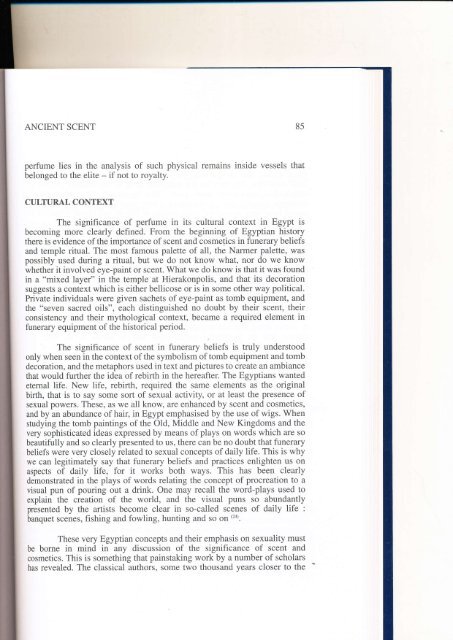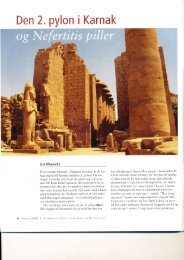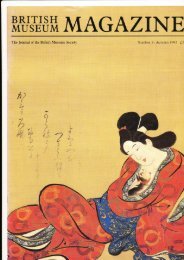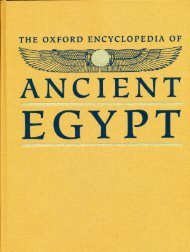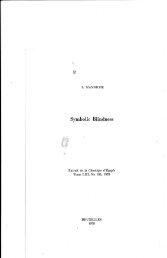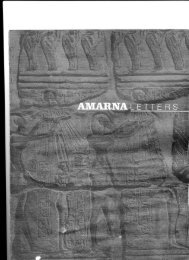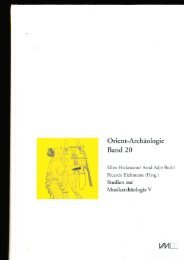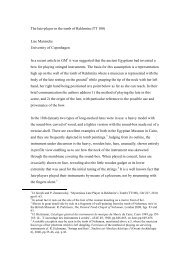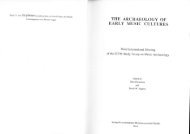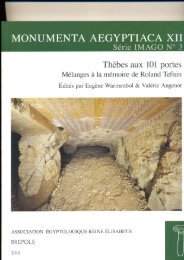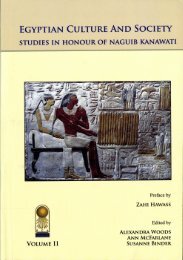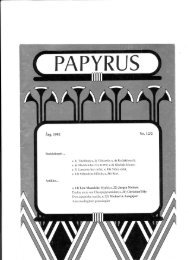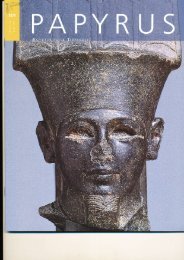You also want an ePaper? Increase the reach of your titles
YUMPU automatically turns print PDFs into web optimized ePapers that Google loves.
ANCIENT SCENT<br />
perfume lies in the analysis of such physical remains<br />
belonged to the elite - if not to royalty.<br />
vessels that<br />
CULTURAL CONTEXT<br />
The significance of perfume in its cultural context in Egypt is<br />
becoming more clearly defined. From the beginning of Egyptian history<br />
there is evidence of the importance of scent and cosmetics in funerary beliefs<br />
and temple ritual. The most famous palette of all, the Narmer palette, was<br />
possibly used during a ritual, but we do not know what, nor do we know<br />
whether it involved eye-paint or scent. What we do know is that it was found<br />
in a "mixed layer" in the temple at Hierakonpolis, and that its decoration<br />
suggests a context which is either bellicose or is in some other way political.<br />
Private individuals were given sachets of eye-paint as tomb equipment, and<br />
the "seven sacred oils", each distinguished no doubt by their scent, their<br />
consistency and their rtrythological context, became a required element in<br />
funerary equipment of the historical period.<br />
The significance of scent in funerary beliefs is truly understood<br />
only when seen in the context of the symbolism of tomb equipment and tomb<br />
decoration, and the metaphors used in text and pictures to create an ambiance<br />
that would further the idea of rebirth in the hereafter. The Egyptians wanted<br />
eternal life. New life, rebirth, required the same elements as the original<br />
birth, that is to say sorne sort of sexual activity, or at least the presence of<br />
sexual powers. These, as we all know, are enhanced by scent and cosmetics,<br />
and by an abundance of hair, in Egypt emphasised by the use of wigs. When<br />
studying the tomb paintings of the Old, Middle and New Kingdoms and the<br />
very sophisticated ideas expressed by means of plays on words which are so<br />
beautifully and so clearly presented to us, there can be no doubt that funerary<br />
beliefs were very closely related to sexual concepts of daily life. This is why<br />
we can legitimately say that funerary beliefs and practices enlighten us on<br />
aspects of daily life, for it works both ways. This has been clearly<br />
demonstrated in the plays of words relating the concept of procreation to a<br />
visual pun of pouring out a drink. One may recall the word-plays used to<br />
explain the creation of the world, and the visual puns so abundantly<br />
presented by the artists become clear in so-called scenes of daily life :<br />
banquet scenes, fishing and fowling, hunting and so on ('o).<br />
These very Egyptian concepts and their emphasis on sexuality must<br />
be borne in mind in any discussion of the significance of scent and<br />
cosmetics. This is something that painstaking work by a number of scholars<br />
has revealed. The classical authors, some two thousand years closer to the


